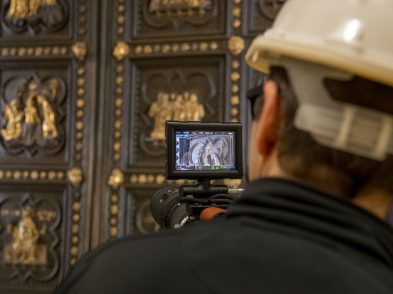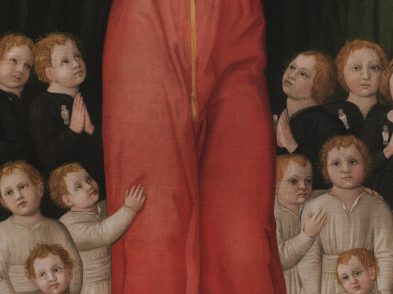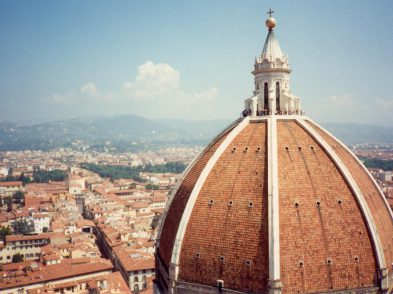Filmmaker David Battistella moved to Florence from Canada in 2011 to pursue his dream: writing and producing a feature film based on Ross King’s 2000 book Brunelleschi’s Dome, about the life of Filippo Brunelleschi and the building of Florence’s Cupola. This column, which began in TF 149, chronicles Battistella’s pursuit of his dream, including anecdotes of his new life in Florence and his efforts to launch his ambitious project.
Over the past few years, I have heard plenty of pontificating about the Cupola, a lot of myth and legend. I have been to many conferences and heard many claims about the Cupola, but there is no better source for the truth about the building of the Cupola than Harvard scholar Margaret Haines. Her careful work and vast reserves of patience have yielded countless details about the construction process. Indeed, without her work, we simply would not know the facts that help explain some of the mysteries of the Cupola.
Haines was a ‘mud angel,’ one of the many young students who helped clean up the mess in Florence after the 1966 flood. She wanted to help rescue great works of art. In my opinion, she has done so: she has uncovered, deciphered, translated and made public the documents of the Opera del Duomo.
Brunelleschi was very secretive about his work and left behind nothing except the finished dome itself. However, a record of the construction does exist through the financial ledgers housed in the Opera del Duomo archive. Showing every purchase and expenditure made for the project, the ledgers reveal how the Opera del Duomo doled out funds, when, for what and to whom.
Over a 16-year period, Haines, along with research assistant Gabriella Battista, meticulously examined every record, translating each one into modern Italian and English from the original Latin and ‘Vulgare’ (an older version of Italian from around the time of Dante). Their work, now digitized, is available to scholars and the curious public (see box).
Building the Cupola was a massive, complex project undertaken at the dawn of a world-changing era. One cannot look at the Cupola and simply say, ‘Oh, it was built like this.’ One must approach it from a broad array of perspectives. Haines’ work grounds those perspectives in historical detail and indisputable fact.
As I pass the Cupola in piazza Duomo, besides thanking Brunelleschi for his vision and the countless workers and artisans for their skill and effort, I thank others, like Haines, who have devoted a significant part of their lives to understanding this breathtaking dome.
See the online project edited by Margaret Haines, ‘The Years of the Cupola 1417–36. The Digital Archive of the Sources of the Opera di Santa Maria del Fiore,’ hosted by the Max Planck Institute in Berlin, at http://duomo.mpiwg-berlin.mpg.de.








